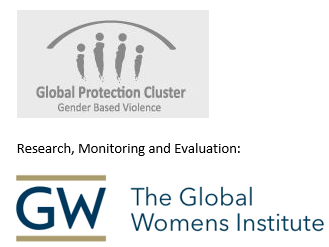- Establishing local coordination mechanisms and ensuring they are linked with national coordination mechanisms is a top priority for all actors working on GBV, since these coordination mechanisms often have different but mutually reinforcing responsibilities:
- the national coordination mechanism may work on the ‘bigger picture’ (e.g., national-level advocacy, data collection and management, working with media, assisting other clusters/sectors at the national level, etc.)
- the field coordination mechanism may work more on the level of operational guidance and oversight of programme implementation.
- When the national and field-based coordination mechanisms do not coordinate, their respective responsibilities are compromised. For example, the national coordination mechanism cannot adequately meet its national-level advocacy responsibilities unless it understands what is happening at the field level. Those working at the field level, in turn, cannot meet their responsibilities for providing operational guidance unless they are speaking with the same voice as the national coordination mechanism about guiding principles, best-practice models, etc.
- The table below highlights some key points in initiating local coordination mechanisms (where they do not already exist) and ensuring links between the national-level and field level/sub-national coordination mechanisms can be established.
|
Get started |
Identify and/or develop sub-national structures as quickly as possible after the establishment of the national coordination mechanism—ideally within the first month of emergency response (if not part of emergency preparedness).
|
|
Identify membership |
Identify—possibly while conducting rapid assessments of GBV issues and programmes in the affected area(s)-- key actors (health, psychosocial, security/protection) at the local levels, as well as people of concern, local GBV and gender experts, etc., who should participate in local-level coordination mechanisms and solicit their involvement in local coordination.
|
|
Identify leadership |
Leadership of the field-level coordination mechanisms should be determined by partners at the first meeting, in the same participatory manner as is done at the national level. It may be more sustainable to identify local rather than international partners as leads and ensure they have sufficient technical and financial support to meet their responsibilities. For specific guidance on this issue, consult the IASC GBV Guidelines and the IASC template for Standard Operating Procedures. |
|
Develop communication channels |
In humanitarian settings where the emergency extends over a large geographic area, local coordination mechanisms should work through regional coordination mechanisms to share information with the national coordination mechanism and vice versa. Regional coordination mechanisms should also foster cross-communication amongst themselves. If regional coordination mechanisms do not exist, strategies should be developed to facilitate direct communication between national and local coordination bodies and to build communication across local coordination bodies. National coordination bodies must take into account local actors’ capacity to access internet; where internet and/or computers are limited, regular communication should be facilitated through scheduled telephone contact and information-sharing through hard-copy updates. |
|
Share information |
Information should be shared at least monthly (and in the early stages of an emergency, even more often) among and between the national coordination mechanism and the field-based coordination mechanisms through dissemination of meeting minutes, action plans, TORs, updates on major activities and outcomes, etc.
|
|
Source: Ward, J. 2010. Handbook for Coordination Gender-based Violence Interventions in Humanitarian Settings, GBV AoR, Section 4.6 |
|
- General guidance on sub-national cluster coordination can be found on the IASC Reference Module for Cluster Coordination at the Country Level.
